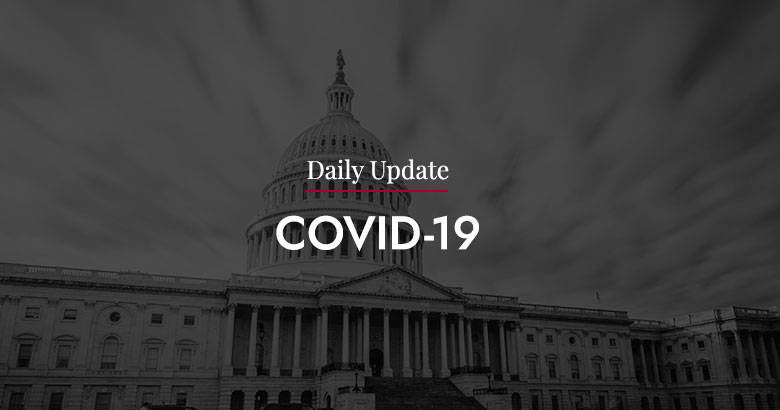COVID Relief Package – PPP & Employee Retention Credit
Today we are providing additional clarification regarding the relief bill approved by Congress on 12/21/20. The bill creates a second loan from the Paycheck Protection Program, called a “PPP second draw” loan for smaller and harder-hit businesses, with a maximum amount of $2 million.
Eligibility
- Employ not more than 300 employees;
- Have used or will use the full amount of their first PPP; and
- Demonstrate at least a 25 percent reduction in gross receipts in the first, second, or third quarter of 2020 relative to the same 2019 quarter. This criterion is drastically different from the original qualification rules for PPP, which simply required the small business to state that economic uncertainty made the PPP loan necessary
- Eligible entities must be businesses, certain non-profit organizations, housing cooperatives, veterans’ organizations, tribal businesses, self-employed individuals, sole proprietors, independent contractors, and small agricultural co-operatives.
WM Wisdom: The bill doesn’t provide a requirement to document the reason for applying for PPP funds for 2nd round of loans. Congress kept it very general and simply states that the borrower must accurately provide the required certification and comply with PPP loan requirements. Borrowers will be required to sign documentation that they meet the revenue loss requirements when applying for forgiveness, and there is no reference to the requirement to provide a loan necessity questionnaire at this time. It will be interesting to see what documentation the SBA will request when applying for a Round 2 PPP loan.
Loan terms
- In general, borrowers may receive a loan amount of up to 2.5X the average monthly payroll costs in the one year prior to the loan or the calendar year.
- No loan can be greater than $2 million.
- Seasonal employers may calculate their maximum loan amount based on a 12-week period beginning February 15, 2019 through February 15, 2020.
- Entities in industries assigned to NAICS code 72 (Accommodation and Food Services) may receive loans of up to 3.5X average monthly payroll costs.
- Businesses with multiple locations that are eligible entities under the initial PPP requirements may employ not more than 300 employees per physical location.
- Waiver of affiliation rules that applied during initial PPP loans apply to a second loan.
- An eligible entity may only receive one PPP second draw loan.
- Fees are waived for both borrowers and lenders to encourage participation.
- For loans of not more than $150,000, the entity may submit a certification attesting that the entity meets the revenue loss requirements on or before the date the entity submits their loan forgiveness application.
Loan forgiveness
- Borrowers of a PPP second draw loan would be eligible for loan forgiveness equal to the sum of their payroll costs, as well as covered mortgage, rent, and utility payments, covered operations expenditures, covered property damage costs, covered supplier costs, and covered worker protection expenditures incurred during the covered period. The 60/40 cost allocation between payroll and non-payroll costs in order to receive full forgiveness will continue to apply.
- The bill creates a simplified application process for loans under $150,000 Borrowers must sign and submit to the lender a certification that is not more than one page in length, including a description of the number of employees the borrower was able to retain because of the covered loan, the estimated total amount of the loan spent on payroll costs, and the total loan amount. Borrowers must also attest that they accurately provided the required certification and complied with Paycheck Protection Program loan requirements.
Employee retention tax credit modifications
- The bill extends the CARES Act employee retention tax credit (ERTC) through June 30, 2021
- An increase in the credit rate from 50% to 70% of qualified wages;
- An increase in the limit on per employee creditable wages from $10,000 for the year to $10,000 for each quarter;
- A reduction in the required year-over-year gross receipts decline from 50% to 20%;
- A safe harbor allowing employers to use prior-quarter gross receipts to determine eligibility;
- The bill provides that employers who receive PPP loans may still qualify for the ERTC with respect to wages that are not paid with forgiven PPP proceeds; SBA will issue more guidance on this.
Paid Sick and Family Leave Tax Credit
- The tax credit was set to expire on December 31, 2020.
- The bill expands the Sick Leave employer tax credit through March 31, 2021.
Questions?
Should you have questions about this topic, or any other topics related to your personal or business situation, please contact us at any time.
To read our first article regarding this bill, please click here.
DISCLAIMER: The WM Daily Update COVID-19, COVID-19 Business Resources and COVID-19 Client News Alerts and other related communications are intended to provide general information on legislative COVID-19 relief measures as of the date of this communication and may reference information from reputable sources. Although our firm has made every reasonable effort to ensure that the information provided is accurate, we make no warranties, expressed or implied, on the information provided. As legislative efforts are still ongoing, we expect that there may be additional guidance and clarification from regulators that may modify some of the provisions in this communication. Some of those modifications may be significant. As such, be aware that this is not a comprehensive analysis of the subject matter covered and is not intended to provide specific recommendations to you or your business with respect to the matters addressed.


